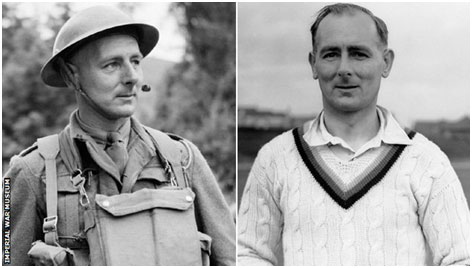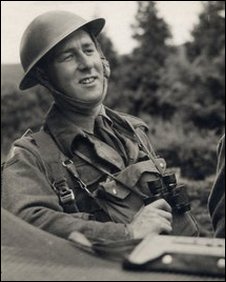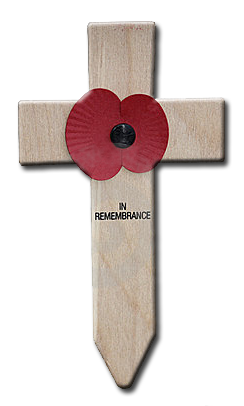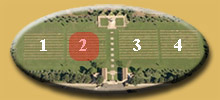






















































































theatre of war
Plain of Catania
Verity's war
Tracing the story of the great English bowler's time as a commander leading a battalion against the Germans in Sicily
James Holland
April 9, 2013
 The 1st Green Howards were to be part of the Allied assault on Sicily, attached to 15th Brigade, 5th Infantry Division, in Eighth Army.
The 1st Green Howards were to be part of the Allied assault on Sicily, attached to 15th Brigade, 5th Infantry Division, in Eighth Army.
The Green Howards launched their attack on the blazing plain of Catania in Sicily in the early hours of 20 July 1943, 10 days after landing. It was a close-range, bitter duel against the crack troops of the Hermann Goering Division.
Massa Carnazza, was where the Germans had their forward machine-guns, each set up with interlocking fire. These were expensive in ammunition, and not the most accurate weapons, but in any initial assault, there was nothing to beat the MG42 for weight of fire. These beasts could pump out 12 bullets per second, enough to slice a man in half.
Verity and his B Company had been left in the open, the barrage suddenly lifted, but still with more than 200 yards to the curving dyke and the enemy positions.
Quiet, unassuming and always generous towards others, Verity volunteered for the army out of conviction. He believed that Hitler and the Nazis were an evil that had to be stopped.
The landings and initial stages of the Sicily campaign had been completed successfully and it was not until the Catania plain was reached, five days after the invasion, that the enemy was able to regroup its forces and put up an organized resistance. The Allied army had chased the Germans northwards from the beachheads south of Syracuse and across the broken, rugged plain towards Catania. 'The enemy had their backs to the wall: wrote Captain W.A. Synge. but they were holding a strong position on high ground to the north of the railway crossing the Catania plain.
The Plain of Catania was an easy place to defend and a difficult one over which to attack. Beyond lie the hills around Misterbianco, in which enemy guns could be easily concealed, while in the plain itself any attacker had to negotiate horrible amounts of water channels and ditches as well as the major River Simeto. All along were teams of machine guns and mortars. Yes, the Allies had big reserves of artillery and air power, but these could only support the attackers. Ultimately, it was the job of the men on the ground to get the final victory in Sicily.
Enemy positions were usually softened up with air and artillery barrages, and then the infantry advanced out across the open.
So it was that 5th Division were ordered to continue the push towards Misterbianco. On the night of 18/19 July 1943, 13th Brigade managed to gain a shallow bridgehead across the River Simeto, but the following night it was the turn of 15th Brigade - and the 1st Green Howards.
The position was guarded by forward machine-gun posts, dug every 20 yards into the side of a steep embankment.' A the fiercely fought battle the attacking force of the 15th Brigade consisted, on the left, A a battalion of the York and Lancasters; and on the right, the 1st Battalion A the Green Howards, A which Captain Verity was charge A B Company. At 5 p.m. on 19 July orders were issued for the brigade A make a night attack. Synge wrote:
Darkness was approaching and it was not possible to make a ground reconnaissance before the attack. This, together with the difficult terrain, helped to contribute to its ultimate failure. Canals and ditches that had looked shallow and easy to negotiate through binoculars in the daylight proved unexpectedly difficult in practice in the darkness. All went well until the leading companies were within a few hundred yards of the railway line. Here they encountered deep fosses which held up the advance to such an extent that the barrage ran away from them.
There were two schools of thought about how to conduct night-time attacks. The first was to infiltrate as silently as possible in the first glimmer of dawn. The other was a night attack with artillery support - a heavy bombardment of enemy positions followed by a creeping barrage behind which the infantry would advance. The advantage of the latter was that it meant the enemy were cowering - or better, being blown to bits - while the infantry began moving forward. One major disadvantage, however, was that the enemy knew an attack was coming. Another was that invariably, the reality didn't live up to the plan. Successfully following a creeping barrage was all about timing - and being able to stick to timings that had been carefully worked out on paper, in daylight. The trouble was that at night, walking over unfamiliar ground and with little means of communicating with the companies either side, and with the noise of battle all around, it could be very difficult to stick to those timings.
Verity's Green Howards company was entrenched for more than an hour, watching a creeping barrage infiltrate the German lines, watching the dust spit and flash under the distant artillery fire. When the barrage ceased, the company moved forward more than half a mile in the moonlight, into a belt of deep shadows cast by the hills on either side of them.
B Company was to lead the Green Howards' attack, and Verity was B Company Commander. In effect, he was leading the entire battalion assault.
They had been moved up to their start position by lorry at around 10pm, then before the attack the barrage had opened up. In any attack, officers had to lead by example, and especially so company commanders. The noise would have been deafening. Shells hurtling over, screaming as they sped through the air. Explosions up ahead, the flashes of light blinding in the darkness.
When the barrage finally ended, it must have been apparent to Verity that already the attack was far from going to plan. His B Company had done well. They were well ahead of the other companies, but still some distance from the enemy, which meant they were both exposed and isolated, with no support on their flanks. Without the deafening barrage, the abruptness of artillery silence would have been alarming.
As they wriggled through the summer corn which gave comparatively good cover, but tracer bullets whistled across the fields from three sides. 'We were more or less surrounded by Germans,' said one of the attacking soldiers. 'There were Germans in front and on either side of us.' Captain Verity, having screened his company as much as possible in the corn, gave the signal to continue the advance.
The men dropped in their tracks and started crawling towards the enemy gun positions.
As they approached a curving dyke, at first mistakenly thinking it was the railway line, mortar fire began to fall as soon as they neared the target. It was now around 4am. Flares and shell explosions illuminated the battleground, turning night into day, and the trees and corn behind the troops caught fire, silhouetting Verity and his men as they penetrated the last defences below a railway embankment.
They pressed on and managed to push the enemy in front of them back across a dyke, the Massa Carnazza.
Opposite the enemy lines, where the fire was at its heaviest, Verity studied the position. The danger point was a farm building away to the left; if he could silence the guns he could carry the position. Accordingly. he ordered one platoon round towards the farmhouse and another to give covering fire. No sooner had he done so than he was hit in the chest by a piece of flying shrapnel. Still leading his men, he continued to shout: "Keep going! Get them out of the farmhouse and me into it!"
A moment later, Lieutenant Laurie Hesmondhalgh, who was Verity's second-in-command, was also hit and killed outright. Beside the wounded Verity was his batman since novembere 1940 , Private Tom Rennoldson. The Company was still struggling to make headway and it was clear that, unless they were quickly relieved by A and D Companies, they were going to remain trapped.
In fact, A and D Companies were desperately trying to help their stranded colleagues, but were being pegged back by the same withering machine-gun and mortar fire that was decimating B Company.

By 4.30am it was all over. The attack had failed. B Company, without their commander and second-in-command, began to fall back, as did A and D Companies, so that by the time dawn broke Verity, with Rennoldson still beside him, was stuck firmly behind enemy lines.
Some reports alleged that an order to withdraw was made but never received.
One of the platoon commanders, Lieutenant Bell, who was awarded the Military Cross, successfully carried out the retreat but next morning, when he returned to the scene and rescued the wounded subaltern, he could find no trace of Verity or Hesmondhalgh.
Smoke hung over the battlefield while the dead and wounded lay where they had fallen as the sun slowly began to rise. Verity and Rennoldson were soon captured. The Germans brought a broken mortar carrier from the farm, packed it with sheaves of corn, lifted Verity onto it and took him, with Rennoldson still in tow, to their field hospital a mile or so to the north. It was a farmhouse, nothing more.
He was in increasingly terrible pain; the wound was festering badly, and part of a rib was broken and pressing against his lung. Eventually, three days later, on 31 July, he was operated on again, and had part of his rib removed. Only a local anaesthetic was used
That afternoon, Verity underwent an emergency operation in a stable at the farm. As he was lifted onto a table, a grenade fell from his shirt. After a moment of panic, Rennoldson was ordered to unprime it, which he did. He remained with Verity until that evening, when he was taken away. It was the last time he saw him.
As darkness began to fall again, the makeshift hospital came under British artillery fire. It had clearly already been hit - there were holes in the roof and the windows were glassless. As Verity was recovering from his operation, a German ambulance was hit and exploded, killing all on board. Two doctors worked ceaselessly through the night.
He and the other wounded - British and 1,500 German alike - survived the night and the next day were taken to Misterbianco and put onto open railway trucks, ferried up through Sicily and then transferred onto a ship and across the Straits of Messina to Reggio on the southern tip of Italy. Bundled off again, put into trucks, Verity and his fellow wounded were taken to a hospital and then the next day placed on another goods train, on straw, to begin a slow journey north to Naples. It is a journey of less than 300 miles but it took two whole days. All this travel, and being lifted on and off trains with little water or food, was not helping the wounded man. His bandages were filthy and he had been given no relief for the pain. By the time he reached Naples on 26 July he was very ill indeed. Fever gripped him and his wound was now infected.
Nor was this hell-journey over. From Naples he was taken by truck to the Italian military hospital at Caserta. There Corporal Henty, another wounded Yorkshireman, recognised him. Word soon spread amongst the wounded British troops that the great English bowler was there with them. Verity talked to Henty, showing him photographs of his wife and sons, Douglas and Wilfred. He was in increasingly terrible pain; the wound was festering badly, and part of a rib was broken and pressing against his lung. Eventually, three days later, on 31 July, he was operated on again, and had part of his rib removed. Only a local anaesthetic was used.
At first the operation appeared to have been a success, but then he suffered the first of three haemorrhages. He remained conscious to the end, talking about his repatriation and getting home again once the war was over. But he was in a bad way. The fever already suggested his wound was infected. The haemorrhage could have caused a Curling's ulcer - a gastric condition brought on by extreme stress - or the break in one of the blood vessels caused by the operation could have resulted in bleeding into his lung; either way it would have been very distressing and frightening indeed. In any case, one of English cricket's great bowlers finally died later that night. He was just 38.
Verity was buried in Caserta with full military honours, and now rests in the military cemetery in the town. It's a beautiful place - a real corner of England. But it's not Yorkshire...
From Verity's war
Tracing the story of the great English bowler's time as a commander leading a battalion against the Germans in Sicily
James Holland
April 9, 2013















